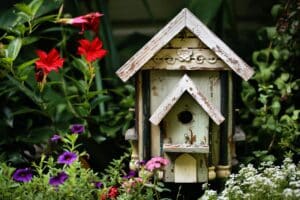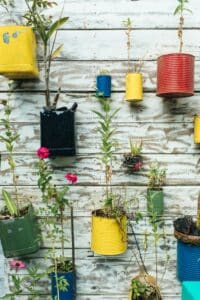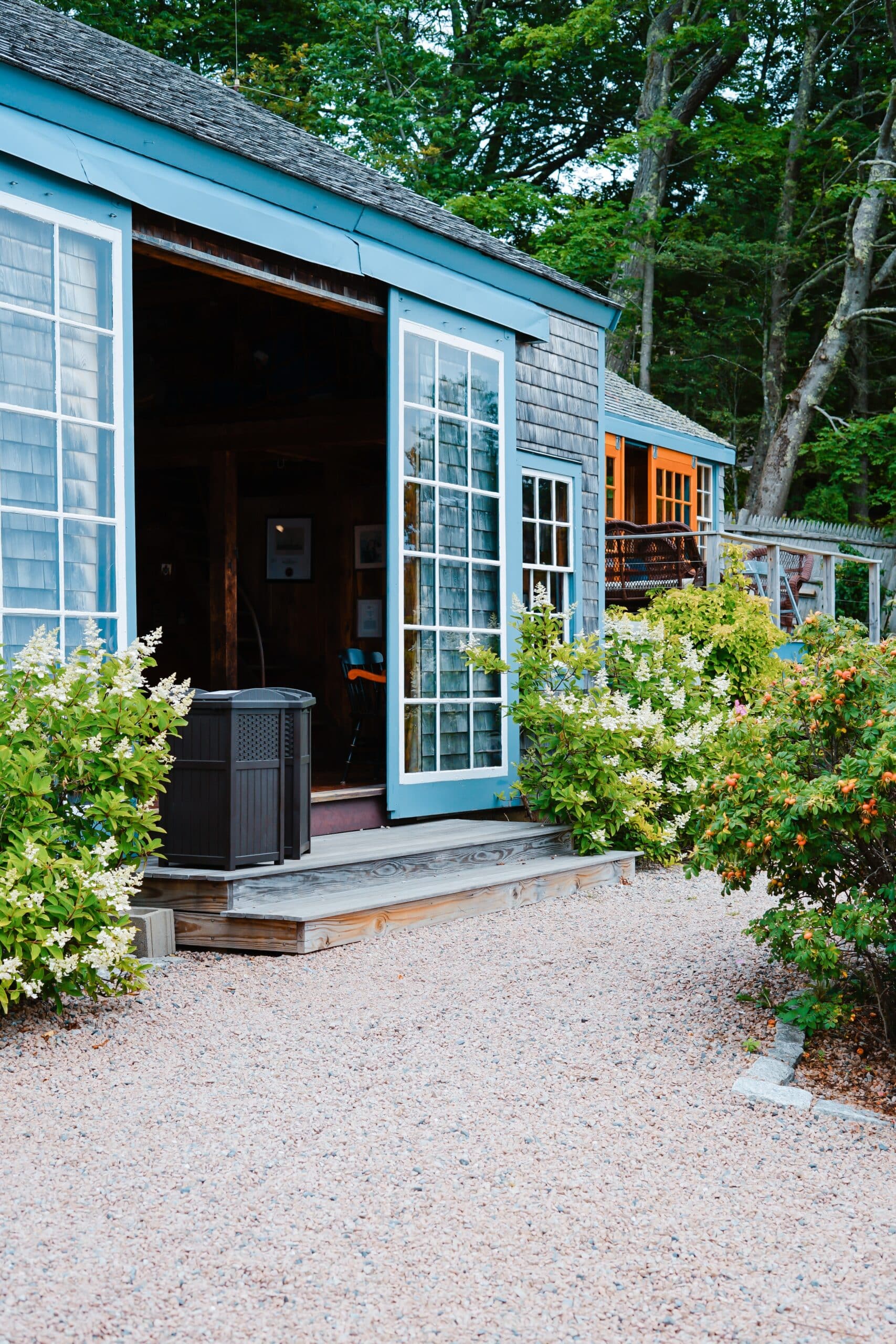Welcome to the ultimate guide on designing your dream garden landscape! Creating an enchanting and visually pleasing outdoor oasis is no small feat, but with the right planning, expert tips, and a touch of creativity, it’s within reach for any homeowner.
In this blog post, we’ll cover essential factors like assessing your available space, honing in on gardening styles that suit you best, and choosing landscaping materials for a cohesive design.
So let’s dive into our treasure trove of insider advice as we embark on this exciting journey towards achieving your ideal backyard paradise.
Key Takeaways
- Assess your garden space and landscape needs by measuring dimensions, evaluating sunlight exposure, identifying style and theme, and determining soil quality and drainage.
- Design a perfect garden layout that fits your needs and budget while incorporating balance, focal points, symmetry, appropriate flora for the region (including native options), hardscaping materials that complement surroundings, water features when applicable (keeping climate in mind), lighting fixtures to promote safety at night use.
- Maintain and plan the perfect dream garden with a regular maintenance plan including proper watering techniques according to specific plant needs; fertilization during seasons; pruning trees/shrubs regularly; addressing pests or diseases promptly; keeping the area tidy with raking up debris or fallen leaves as necessary.
Assessing Your Garden Space And Landscape Needs
Evaluate the available space and sunlight exposure to determine the best areas for planting and hardscaping. Identify your desired garden style and theme, as well as soil quality and drainage needs.
Evaluating Available Space And Sunlight Exposure
Before diving into your dream backyard landscape project, it’s crucial to evaluate the available space and sunlight exposure in your outdoor area.
Begin by measuring the dimensions of your garden, noting irregularities or existing structures such as fences or sheds. Once you’ve created a rough sketch of the area, take note of which sections receive ample sunlight throughout the day.
Keep in mind that some flowers flourish in full sun while others prefer shade or partial sun exposure. For instance, sun-loving perennials like lavender and coneflowers need at least six hours of direct sunlight daily to thrive whereas hostas and ferns are perfect for shadier spots.
Identifying Garden Design And Theme
 Identifying your style and theme is a crucial step in designing the outdoor space of your dreams. Your chosen theme should reflect your personal taste, lifestyle, and the architectural style of your home to create a cohesive look.
Identifying your style and theme is a crucial step in designing the outdoor space of your dreams. Your chosen theme should reflect your personal taste, lifestyle, and the architectural style of your home to create a cohesive look.
Begin by browsing through garden landscaping ideas online or in gardening magazines for inspiration. Take note of elements that appeal to you, such as specific plants, color schemes, or hardscape materials like pavers and retaining walls.
Consider how these can be incorporated into your design while ensuring they suit your region’s climate as well as native plants for improved sustainability. Visiting local botanical gardens can also provide valuable insight into what types thrive in similar conditions to your own yard.
Determining Soil Quality And Drainage
Determining the soil quality and drainage in your garden is a critical step towards creating the perfect landscape. The type of soil you have will greatly impact which plants will thrive, as well as how much water they need to grow proficiently.
Proper drainage is essential for maintaining healthy plant growth and preventing issues such as root rot or waterlogged patches in your outdoor space. To check the drainage capacity, dig a hole about 12 inches deep and fill it with water.
Observe how long it takes for the water to drain completely; ideally, this should take no more than six hours.
By taking into account both the soil quality and its ability to drain efficiently, you’ll be better equipped to choose plants that are best suited to thrive in your unique environment while also ensuring their overall health throughout various weather conditions.
Considering Hardscaping And Softscaping Options
Hardscaping and softscaping are two crucial aspects. Hardscaping refers to elements such as walkways, patios, retaining walls, and fencing that serve a functional purpose.
Softscaping, on the other hand, includes living elements such as trees that add color and texture to your outdoor space. When considering hardscaping options for your garden, it’s important to choose materials that complement the overall style of your home while enhancing visual interest within the backyard.
For instance, natural stone pavers or brickwork can create a rustic appeal while concrete or polished stone offer a sleeker modern look.
Designing Your Dream Garden Landscape
Create a layout that fits your needs and budget while incorporating balance, focal points, and symmetry.
Choosing Appropriate Plants And Features For Your Region

Choosing the right plants and features for your region is crucial in creating a dream landscape. Here are some tips to help you make the best choices:
- Research plants that thrive in your area’s climate and sunlight conditions.
- Consider using native plants as they are adapted to the local environment, making them low – maintenance and attractive to local wildlife.
- Think about adding seasonal interest by incorporating plants with different flowering times or fall foliage colors.
- Incorporate hardscaping elements like grass, stone or wood structures that complement the natural surroundings and create focal points.
- Use water features like fountains or ponds to add tranquility and aesthetic appeal, but also ensure they are appropriate for your climate and maintenance level.
- Install lighting fixtures that highlight specific features and promote safety during nighttime use.
By choosing the right plants and features, you can create a garden landscape that not only looks beautiful but also functions well within its environment.
Creating A Layout That Fits Your Needs And Budget
When it comes to designing your dream garden landscape, creating a layout that fits both your needs and budget is crucial. This involves selecting the appropriate plants, features, and materials for your region while also considering the size of your outdoor space.
To make the most out of a small area, consider using raised beds or container gardening to maximize growing space.
For larger budgets and spaces, there are endless options for landscaping features such as walkways, pergolas, water features, seating areas and more. However, it’s essential to prioritize what you want to focus on within the design plan so that you stay within budget constraints.
Incorporating Balance, Focal Points, And Symmetry
Creating a garden that is visually appealing and harmonious requires incorporating balance, focal points, and symmetry. Balance refers to distributing visual weight throughout the space to create an overall sense of equilibrium.
For example, placing a large plant on one side of the garden can be balanced by placing several smaller plants on the other side. Focal points are elements that draw attention or serve as a centerpiece, such as a fountain or sculpture.
When designing your dream garden, keep these principles in mind to achieve optimal results. You may use repetition or contrast among elements like flowers or trees for balance; placing objects with height difference will make up focal points while using patterns around symmetrical designs will give structure and harmony to your project.
Sketching A Plan Or Using A Garden Design App
Creating a layout can be overwhelming, but sketching a plan or using a design app can help bring clarity to your vision.
A basic sketch of the available space will aid in determining which plants and features will fit best within the area. In addition, there are many online tools and applications that provide virtual simulations, allowing you to experiment with various layouts before deciding on a final plan.
Incorporating this step into your design process can save time and prevent costly mistakes down the line.
Maintaining Your Garden

Establish a regular maintenance plan to keep your garden healthy and beautiful, including proper watering, fertilization, pruning techniques and addressing pests and diseases promptly.
Establishing An Ongoing Maintenance Plan
Maintaining your garden landscape is just as important as designing it. To ensure your garden stays healthy and beautiful, here are some helpful tips for establishing an ongoing maintenance plan:
- Regularly water your plants and lawn, but be careful not to overwater them.
- Fertilize your plants according to their specific needs and the season.
- Prune trees, shrubs, and bushes to keep them healthy and looking neat.
- Use pots to keep your greens organized.
- Keep an eye out for pests or diseases that may affect your plants and address them promptly.
- Rake up fallen leaves and debris to keep the space tidy.
- Mulch your flower beds to help retain moisture in the soil and prevent weed growth.
- Consider installing a drip irrigation system for more efficient watering.
- Schedule regular professional landscaping services if necessary.
Remember, different plants have different maintenance needs depending on their species, so make sure to research the specific care requirements of each plant in your garden.
By following these simple maintenance tips, you can keep your dream garden looking great all year round.
Proper Watering, Fertilization, And Pruning Techniques
One of the keys to maintaining a beautiful garden is proper watering, fertilization, and pruning. Watering your plants deeply and infrequently helps encourage deeper root growth and reduces water waste.
Be sure to give each plant enough water based on its specific needs – some need more frequent watering than others. When it comes to fertilization, using too much can actually harm your plants.
Pruning is also essential for keeping your garden healthy and looking great. Regularly cutting back dead or diseased branches will promote new growth while removing unnecessary foliage provides better air circulation and sunlight exposure.
Addressing Pests And Diseases Promptly
It’s important to keep an eye out for any pests or diseases that may be affecting your garden landscape. These can quickly spread and cause damage to plants, so it’s crucial to address them promptly.
One way to prevent these issues is by selecting plants that are resistant to common pests in your region. Additionally, regularly inspecting your garden for signs of infestation or disease can help catch problems early on.
If you do notice an issue, there are many organic and non-toxic methods available for control, such as using insecticidal soap or neem oil.
Maintaining an ongoing maintenance plan is also key in keeping the garden looking its best. Proper watering, fertilization and pruning techniques should be implemented while addressing pests and diseases promptly which could otherwise spread causing detrimental effects on plant life both near and far from the source of the problem.
Enhancing Your Garden Experience
Incorporate outdoor living spaces, such as a seating area or dining space, arbors and ground covers to make your garden feel like an oasis and perfect spot for al fresco gatherings.
Incorporating Outdoor Living Spaces
Creating outdoor living spaces can transform your garden landscape into a functional and beautiful oasis. Adding seating and dining areas, benches, pergola, and even fire pits can provide a cozy atmosphere for socializing or relaxation.
By incorporating appropriate lighting and water features like fountains or ponds, you can create a soothing ambiance that enhances the overall experience.
Adding Water Features And Appropriate Lighting
Water features and appropriate lighting are excellent additions to any garden landscape. These elements can enhance the overall beauty and ambiance of your outdoor living space. Here are a few tips to consider when adding water features and lighting:
- Water Features:
- Choose a water feature that complements your garden’s style and theme.
- Consider the size of your space when choosing a water feature, so it does not overpower or underwhelm the area.
- Incorporate aquatic plants around the water feature to add texture and color.
- Ensure proper maintenance of the water feature, including cleaning, regular servicing, and winterizing.
- Lighting:
- Use lights to highlight focal points in your garden, such as trees, fountains, or sculptures.
- Choose warm or neutral – toned lights for a relaxing ambiance.
- Install solar-powered lights for an eco-friendly option that also saves on energy bills.
- Use downlights or uplights for different effects.
Both water features and lighting can be used together creatively to create stunning effects. Keep in mind the importance of proper maintenance to ensure both retain their beauty over time.
Creating Sustainability And Eco-friendliness
Incorporating sustainability and eco-friendliness not only helps the environment but also creates a healthier and more vibrant space. One way to achieve this is by using native plants as they are adapted to local conditions, require low maintenance and less water compared to non-native species, provide habitat for wildlife, and help maintain biodiversity.
Another way is by practicing organic gardening methods such as composting, using natural pesticides like neem oil or garlic spray instead of chemical ones, and reducing water usage through drip irrigation systems or rainwater harvesting.
Additionally, incorporating permeable surfaces like hedges, gravel paths or porous pavers can reduce runoff and prevent erosion while adding visual interest to the garden.
Conclusion
Creating your dream garden landscape requires careful planning and consideration of various factors. By assessing your available space, identifying your style, and incorporating the right plants and features, you can bring your vision to life.
Remember to maintain your garden regularly and incorporate outdoor living spaces that enhance your experience. With these expert tips in mind, you can create a beautiful and functional outdoor oasis that brings you joy for years to come.
FAQ:
Q: What are some garden landscaping ideas?
A: Some garden landscaping ideas include planting flowers, adding a fence, incorporating hard landscaping such as pavers or a patio, creating raised beds, and using landscaping materials such as mulch or stone.
Q: What is hard landscaping?
A: Hard landscaping refers to the use of materials such as stone, pavers, and wood to create permanent fixtures in a garden. These can include patios, walkways, retaining walls, and arbors.
Q: How do I plan the perfect garden?
A: To plan the perfect garden, consider factors such as the desired style, the amount of outdoor space available, the types of plants and flowers that will thrive in the area, and any other landscaping features desired.
Q: What is the role of a garden designer?
A: A garden designer is responsible for creating a plan for the outdoor space, taking into account the client’s preferences and the layout of the area. They may also be responsible for selecting plants and overseeing the installation of any hard landscaping elements.
Q: What is low-maintenance landscaping?
A: Low-maintenance landscaping refers to designing a garden with minimal upkeep requirements. This can include using evergreen plants, incorporating hard landscaping elements that require little maintenance, and selecting plants that are easy to care for.
Q: How do I landscape my garden?
A: To landscape your garden, begin by creating a plan for the layout and desired features. This can include planting flowers and trees, adding hard landscaping elements such as a patio or walkway, and incorporating seating areas or other outdoor features.
Q: What types of plants and flowers should I consider for my garden?
A: The types of plants and flowers to consider for your garden will depend on the climate, soil type, and amount of sunlight in the area. Some popular options include perennials, shrubs, and sedum.
Q: How can I keep my garden looking its best?
A: To keep your garden looking its best, be sure to regularly water and fertilize the plants, prune any overgrown areas, and remove any weeds. Consider using mulch or other ground coverings to help retain moisture in the soil.
Q: What is the difference between interior design and landscape design?
A: Interior design focuses on designing the inside of a home or building, while landscape design refers to creating outdoor spaces such as gardens, patios, and walkways.
Q: What are some hardscape options for my garden?
A: Some hardscape options for a garden include stone steps, retaining walls, patios, walkways, and pergolas.



2 comments
[…] outdoor space doesn’t have to be a daunting, expensive task. With our 15 quick and simple garden transformation ideas, you can bring new life to your patio, lawn or balcony without breaking the […]
[…] diving into your backyard landscaping project, it’s essential to carefully assess the space you have and identify your specific needs. […]
Comments are closed.